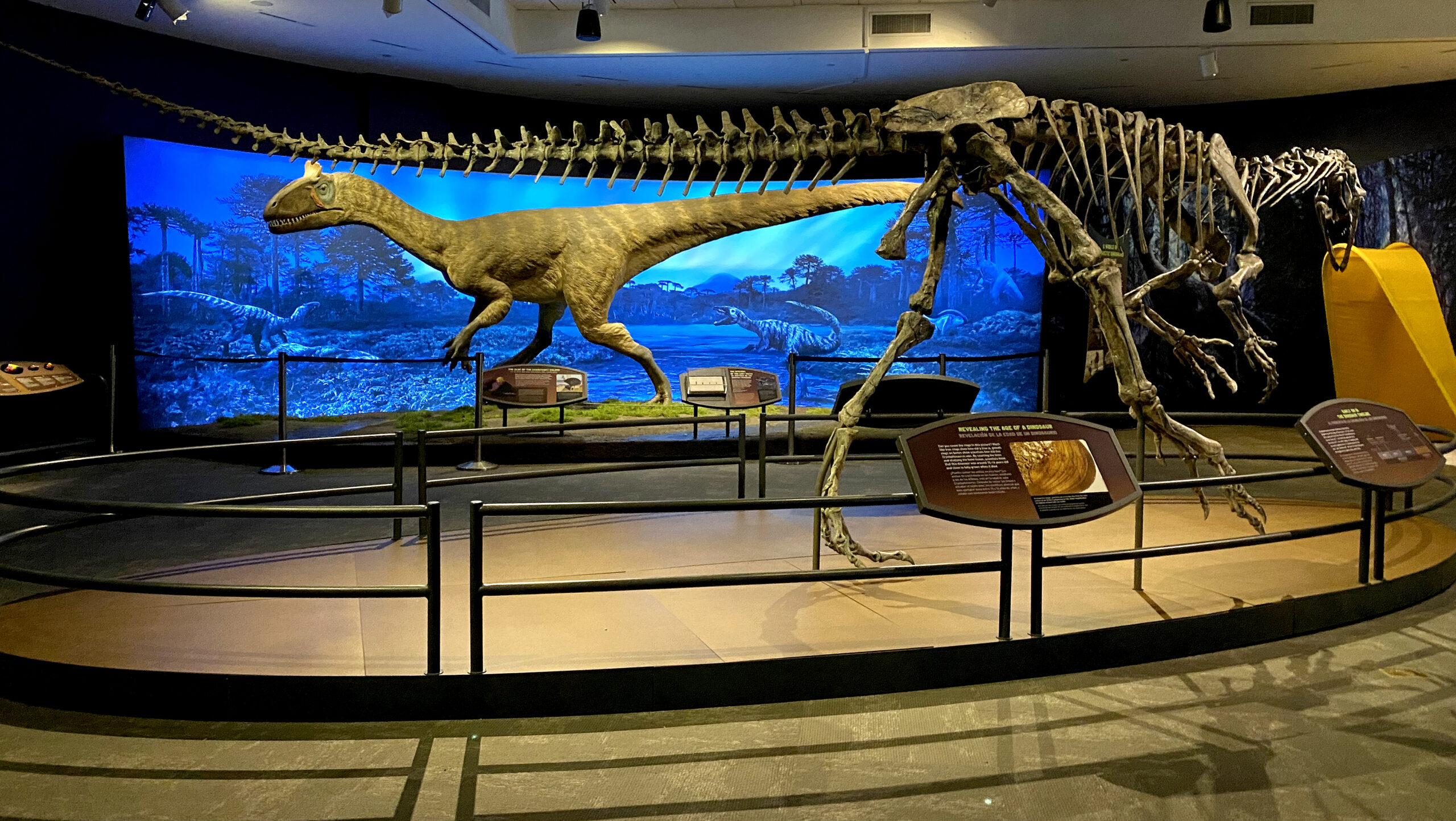While we know Antarctica is the coldest place on our planet, covered in ice and beset by sub-freezing temperatures; it wasn’t always so. Two hundred million years ago, Antarctica was a lush, temperate rainforest home to crocodile-sized amphibians and rhinoceros-sized dinosaurs. The Fernbank Museum’s new exhibition “Dinosaurs of Antarctica” explores this surprising prehistoric world and its strange inhabitants, with preserved skeletons, interactive elements and educational film content. Fernbank Museum Director of Education Sarah Arnold joined “City Lights” host Lois Reitzes via Zoom to talk about the ancient lifeforms of Earth’s most mysterious continent.
“Antarctica, 200 million years ago, didn’t look or feel anything like it does today,” said Arnold. “It was almost tropical, and it was not on its own … It was connected to Australia, and part of the reason it was so warm and lush is because the ocean currents, which move around those landmasses, were not what they are today.” The connected landmasses of the Jurassic period were a supercontinent called Gondwana, which experienced a mild, temperate climate warmed by the ocean current that surrounded it. This fertile land sustained a unique evolution of species not seen elsewhere.
“There are some … large dog-sized dinosaurs called sauropodomorphs,” said Arnold. “They have a similar body shape to some of the larger sauropods like Argentinosaurus, but they have a very long neck and a very long tail and a stout body with four pillar-shaped legs.” She continued, “The star of the exhibit, of course, is Cryolophosaurus.”
Cryolophosaurus, which Arnold described as “the size of a bull moose,” stood 12 feet high, 25 feet long and weighed around 1,500 pounds. “This one is exceptional because dating that fossil reveals that these animals existed in the early Jurassic period,” she explained. “We don’t have many dinosaurs recorded from that time. So whether it was one of the first or just the oldest that we have, it’s a pretty significant find, this one.”
The exhibit provides a glimpse into the experiences of the many generations of explorers who had studied Antarctic fossils, starting in 1820, when the first sailors spotted the then-unknown continent. “One of the things that they found was that even though 98% of this continent is constantly covered by ice, the 2% that isn’t did have fossils … In fact, it was awash with fossils,” said Arnold. “So they were able to take some of those fossils back over the course of the next couple hundred years, of course, and study them and figure out what sort of life was there.”






